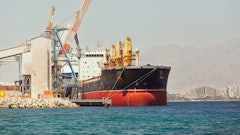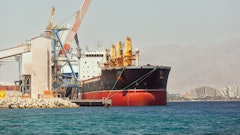
The unfolding events in vital maritime passages such as the Red Sea, Suez Canal, and Panama Canal have prompted swift responses from major shipping companies, thereby impacting the container shipping sector. An additional 40% longer route, causing heavy upward pressure in the operating costs is expected to persist as the shipping time extends anywhere between 1-4 weeks due to the longer route.
“The situation in the Red Sea has been escalating quite significantly over the last two weeks where Houthi rebels have started to attack the commercial vessels by the big ocean liners. Subsequently the container liners are essentially instructing their vessels to avoid transiting through the Suez Canal and around the Cape of Good Hope adding quite a significant delay and time to their East to West trade journeys,” says Christian Roeloffs, co-founder and CEO, Container xChange.
Key takeaways:
- Recent missile attacks by Houthi militants in the Red Sea have prompted leading shipping entities like CMA CGM, Hapag-Lloyd, Maersk, and Mediterranean Shipping Co. to temporarily halt transits through the Suez Canal.
- Additionally, the Panama Canal has been effectively closed to MPV (multi-purpose vessel) shipping until at least May, leading carriers to explore alternative routes via the Cape of Good Hope and the Strait of Magellan.
- Vessel schedules may face disruptions due to route changes and heightened security measures. Delays in shipments through both the Suez and Panama Canals could affect delivery timelines.
- War risk premiums are likely to rise, affecting carriers and potentially leading to increased freight costs.
- The closure of the Panama Canal may shift market dynamics, impacting routes and cargo volumes. The West Coast is expected to regain market share as carriers adjust their strategies.
- The Red Sea trade route is strategically significant due to its role in connecting the Mediterranean Sea to the Indian Ocean, providing a shortcut for ships traveling between Europe and Asia and Africa. The 193-km-long canal accounts for 12% of global trade, including 30% of all container movement. A huge amount of Europe’s energy supply, palm oil and grain come through the Suez Canal Waterway which also gets impacted by these attacks and subsequently by the disruptions thereafter.
“Now the shares of shipping lines have jumped in anticipation of a post-COVID disruption revival. It will all depend on how navies take this up. Egypt has a significant commercial interest in the functioning of the Suez Canal as it is one of the main revenue drivers and if the diversion happens then it will have a significant impact there,” Roeloffs adds. “As of now, the traffic at the Suez Canal and the Red Sea looks healthy but that can turn around very quickly. If we go by history, then the situation of the Ever Given did create a lot of traffic jam a few years ago, the repercussions of which were felt for months.”
“The Red Sea, especially with the Suez Canal, is like a superhighway for shipping containers, connecting different parts of the world, particularly Europe, Asia and Africa. However, recent disruptions are poised to escalate operational costs, adding significant strain, while concurrently exerting downward pressure on profits. It marks a disheartening beginning to the strategic planning for the year 2024," says Roeloffs.




























